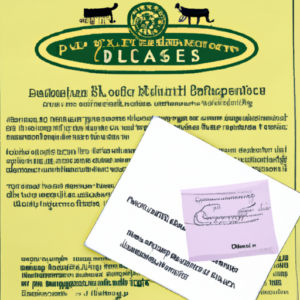When it comes to designing a safe and efficient handling facility, several key factors need to be considered. From ensuring the physical security of the facility to optimizing its layout for streamlined operations, there are various elements that contribute to creating an effective facility. In this article, we will explore some essential tips and considerations for designing a handling facility that not only enhances security but also maximizes productivity. So, if you’re ready to design a facility that meets all your operational needs, let’s dive in and explore the world of effective and secure handling facility design together.
Designing an Effective and Secure Handling Facility
Designing an effective and secure handling facility is crucial for businesses that deal with the storage and transportation of goods. Whether you are managing a warehouse, a distribution center, or a manufacturing plant, creating a well-designed facility is essential to ensure the safety and efficiency of your operations. In this article, we will guide you through the key factors and considerations involved in designing a handling facility that is both effective and secure.
Objectives of the Facility
Before diving into the design process, it is important to outline the objectives of your handling facility. What are the primary functions it needs to perform? Do you need to optimize storage capacity, streamline material flow, or ensure high-speed order fulfillment? Identifying the primary objectives will help you define the layout and equipment requirements of the facility.
Determining Facility Requirements
Once you have established the objectives, the next step is to determine the specific requirements of your handling facility. These requirements can include factors such as the type and volume of goods to be handled, the size and weight of the items, and any special considerations such as temperature control or hazardous material handling. By carefully analyzing these requirements, you can ensure that your facility is tailored to meet the unique needs of your operations.
Site Selection and Layout
Choosing the right site for your handling facility is critical. Factors such as proximity to transportation networks, availability of utilities, and cost should be considered during the site selection process. Additionally, the layout of the facility needs to be designed with efficiency in mind. A well-planned layout will optimize material flow, minimize travel distances, and ensure the smooth operation of your handling processes.
Equipment Selection and Placement
Selecting the right equipment for your handling facility is essential for its efficiency and productivity. Depending on your specific requirements, you may need equipment such as forklifts, conveyors, pallet racks, or automated systems. Consider factors such as load capacity, maneuverability, and compatibility with your existing infrastructure when choosing equipment. Proper placement of equipment within the facility should also be considered to ensure smooth workflow and minimize congestion.
Security Considerations
Creating a secure handling facility is crucial to safeguard your assets and protect against unauthorized access or theft. Implementing robust security measures will not only provide peace of mind but also reduce the risk of losses. Conducting a thorough security assessment will help you identify potential weaknesses and determine the necessary steps to mitigate them.
Entry and Exit Points
Securing the entry and exit points of your facility is of utmost importance. Installing robust access control systems, such as electronic gates, turnstiles, or biometric scanners, can help regulate entry and monitor the movement of individuals. Additionally, a visitor management system can be implemented to ensure that only authorized personnel have access to restricted areas.
Surveillance and Monitoring Systems
Implementing a comprehensive surveillance and monitoring system is essential for the security of your handling facility. This can include the installation of CCTV cameras, both indoors and outdoors, to monitor the premises. It is important to strategically position cameras to cover critical areas such as entrances, exits, storage areas, and high-value merchandise. Additionally, consider integrating an alarm system to promptly alert security personnel in case of any unauthorized access or suspicious activities.
Access Control Measures
In addition to securing entry and exit points, it is necessary to implement access control measures within the facility itself. This can involve the use of access cards or keypads to restrict access to different areas based on job roles, security clearances, or operational requirements. By ensuring that only authorized personnel can access specific areas, the risk of theft, vandalism, or accidents can be significantly reduced.
Fire Prevention and Protection
Fire prevention and protection should be a top priority when designing a handling facility. Install fire detection and suppression systems, such as smoke detectors, sprinkler systems, and fire extinguishers, at strategic locations throughout the facility. Regular inspections and maintenance of these systems should be conducted to ensure their reliability in the event of a fire. Additionally, developing and implementing fire safety protocols, including employee training and evacuation plans, is crucial to minimize the risk of injuries and property damage.
Safety Protocols and Training
Creating a safe working environment is vital to prevent accidents and injuries. Develop comprehensive safety protocols and procedures that address potential hazards and provide guidelines for safe work practices. Regular training sessions should be conducted to educate employees about safety procedures, the proper use of equipment, and emergency response protocols. By promoting a safety-conscious culture, you can significantly reduce the likelihood of accidents and ensure the well-being of your workforce.
Emergency Response Plans
Preparing for emergencies is essential to minimize the impact on your handling facility and its operations. Develop detailed emergency response plans that cover a wide range of scenarios, such as natural disasters, power outages, or security breaches. These plans should include steps for evacuations, communication protocols, emergency contacts, and recovery procedures. Regular drills and exercises should be conducted to test the effectiveness of the plans and train employees to respond effectively in stressful situations.
In conclusion, designing an effective and secure handling facility requires careful consideration of various factors. By establishing clear objectives, determining specific requirements, selecting the right equipment, implementing robust security measures, and ensuring safety protocols and emergency response plans are in place, you can create a facility that optimizes productivity, safeguards assets, and protects the well-being of your employees. With a well-designed handling facility, you can enhance operational efficiency and establish a secure environment for your business.






